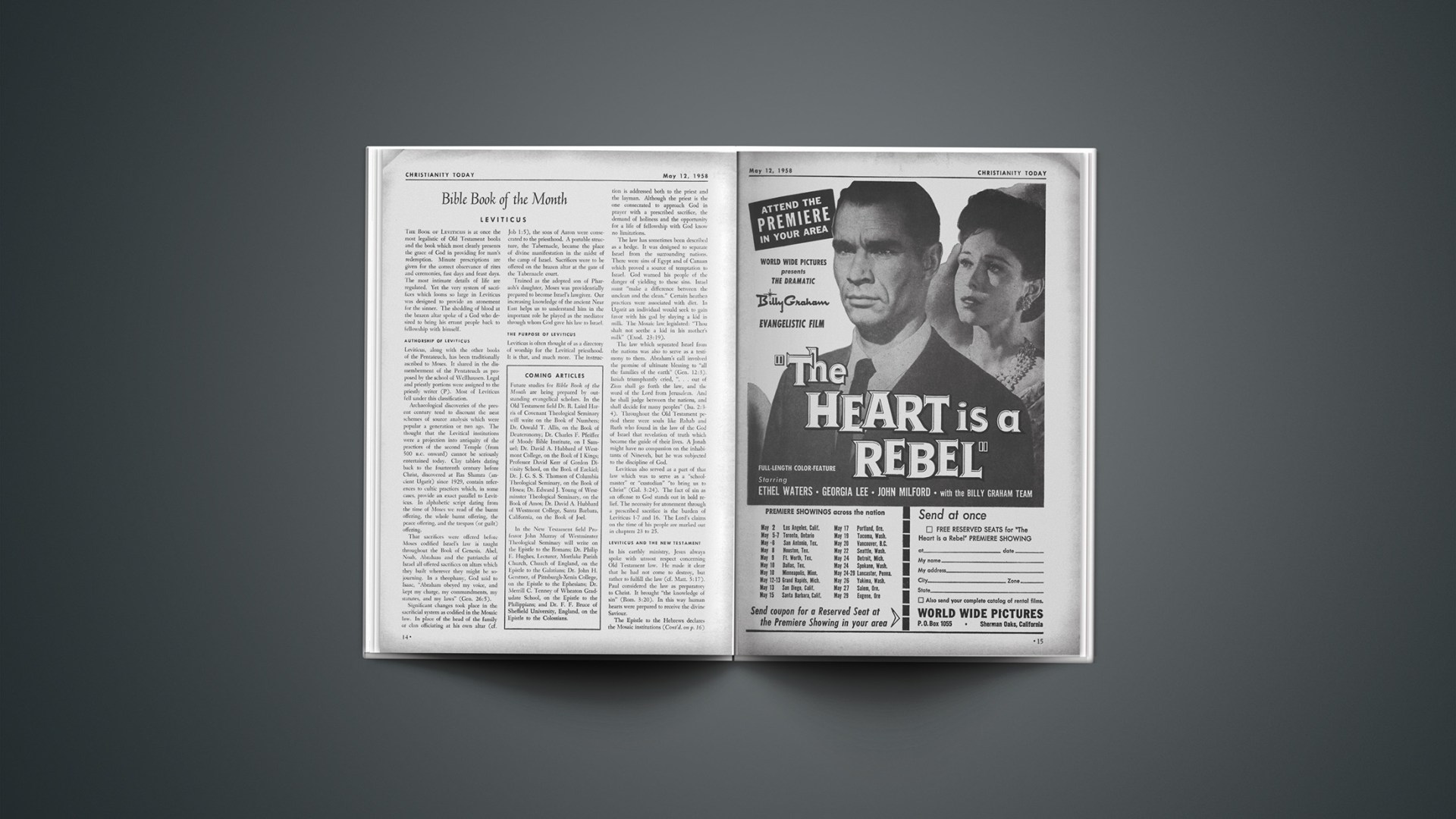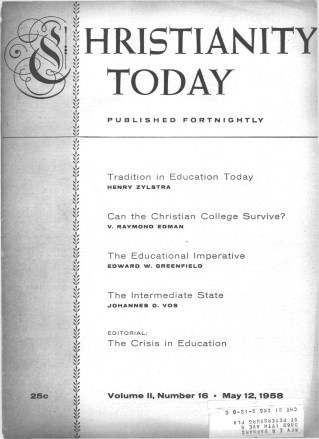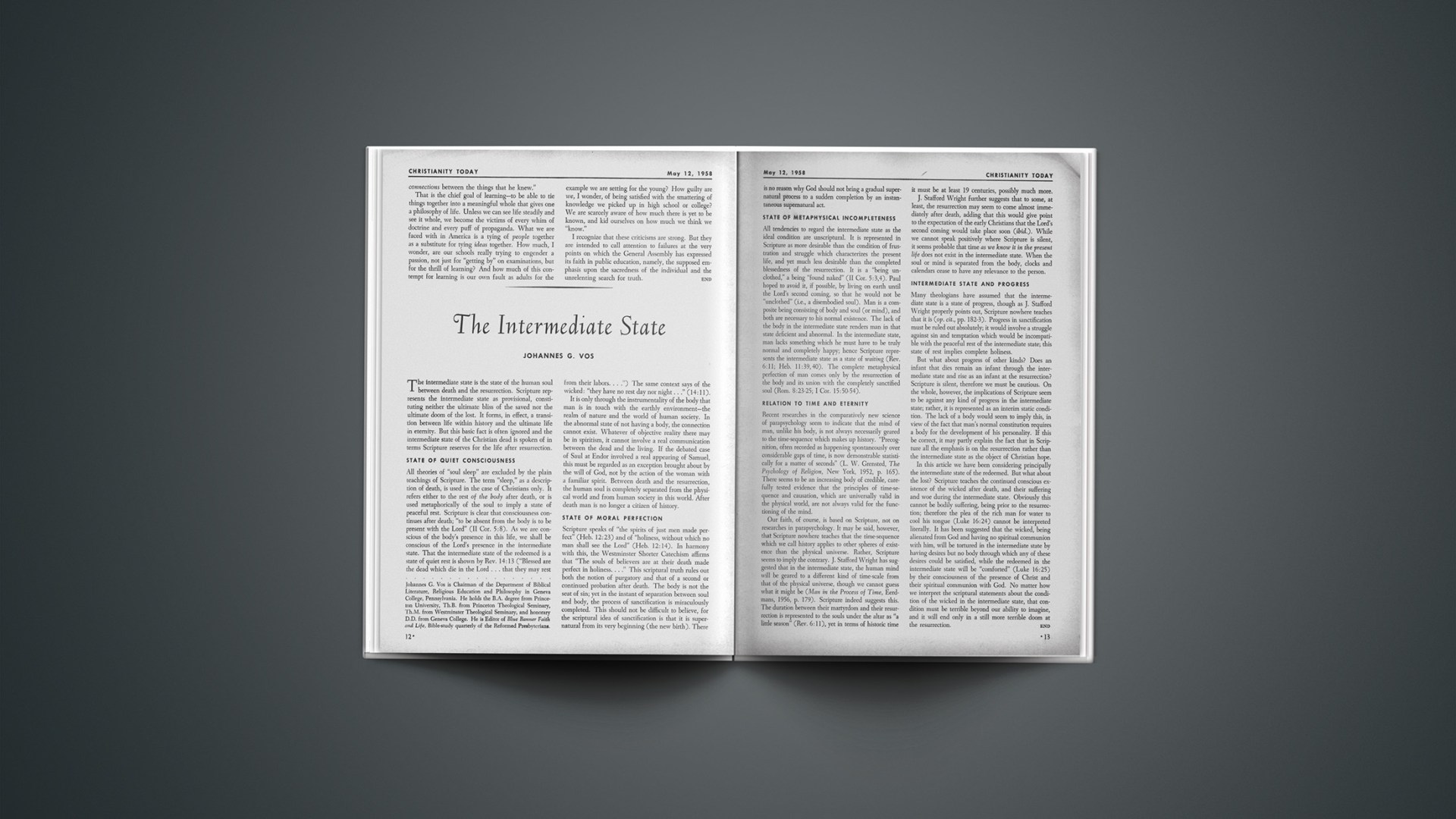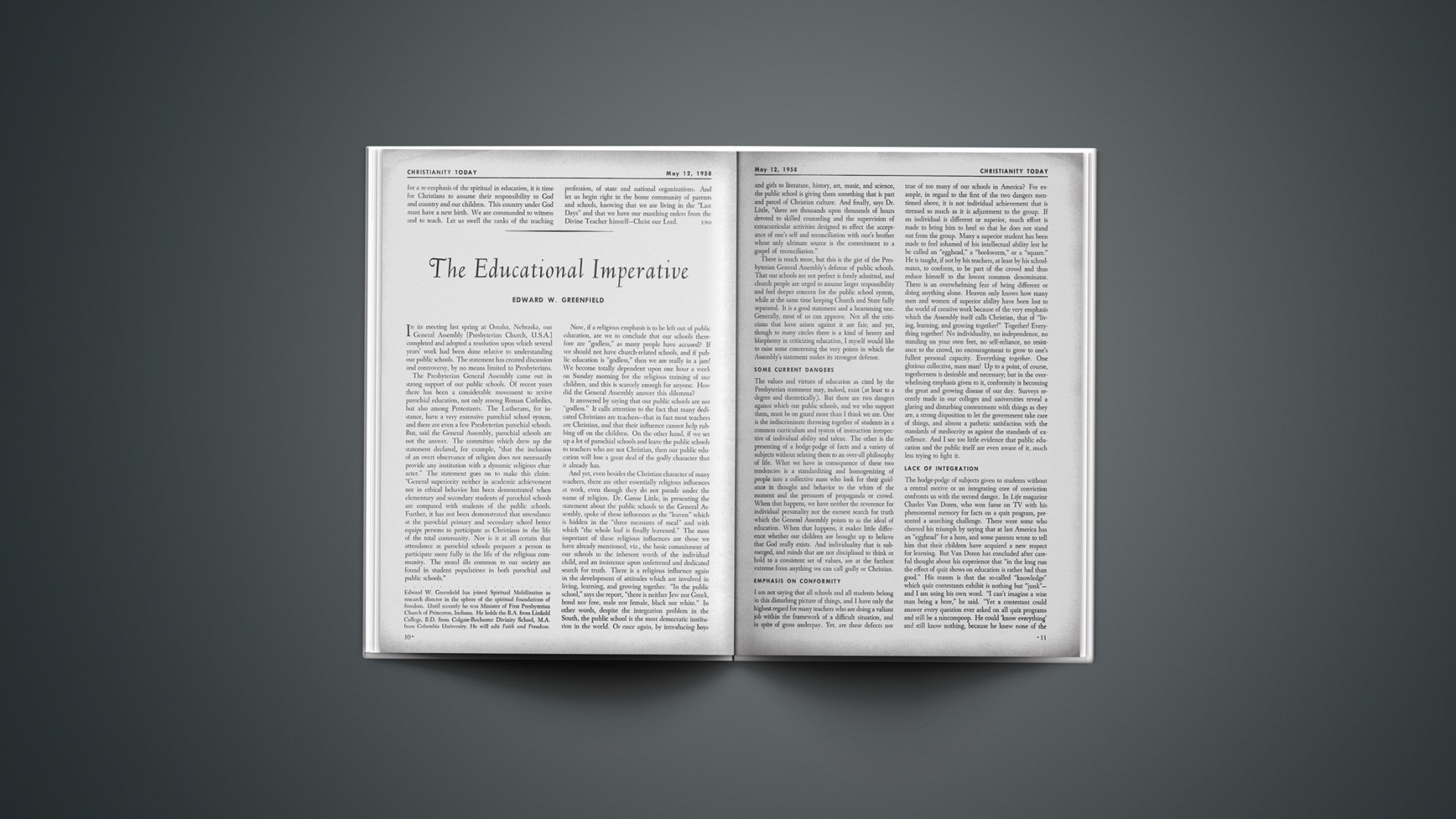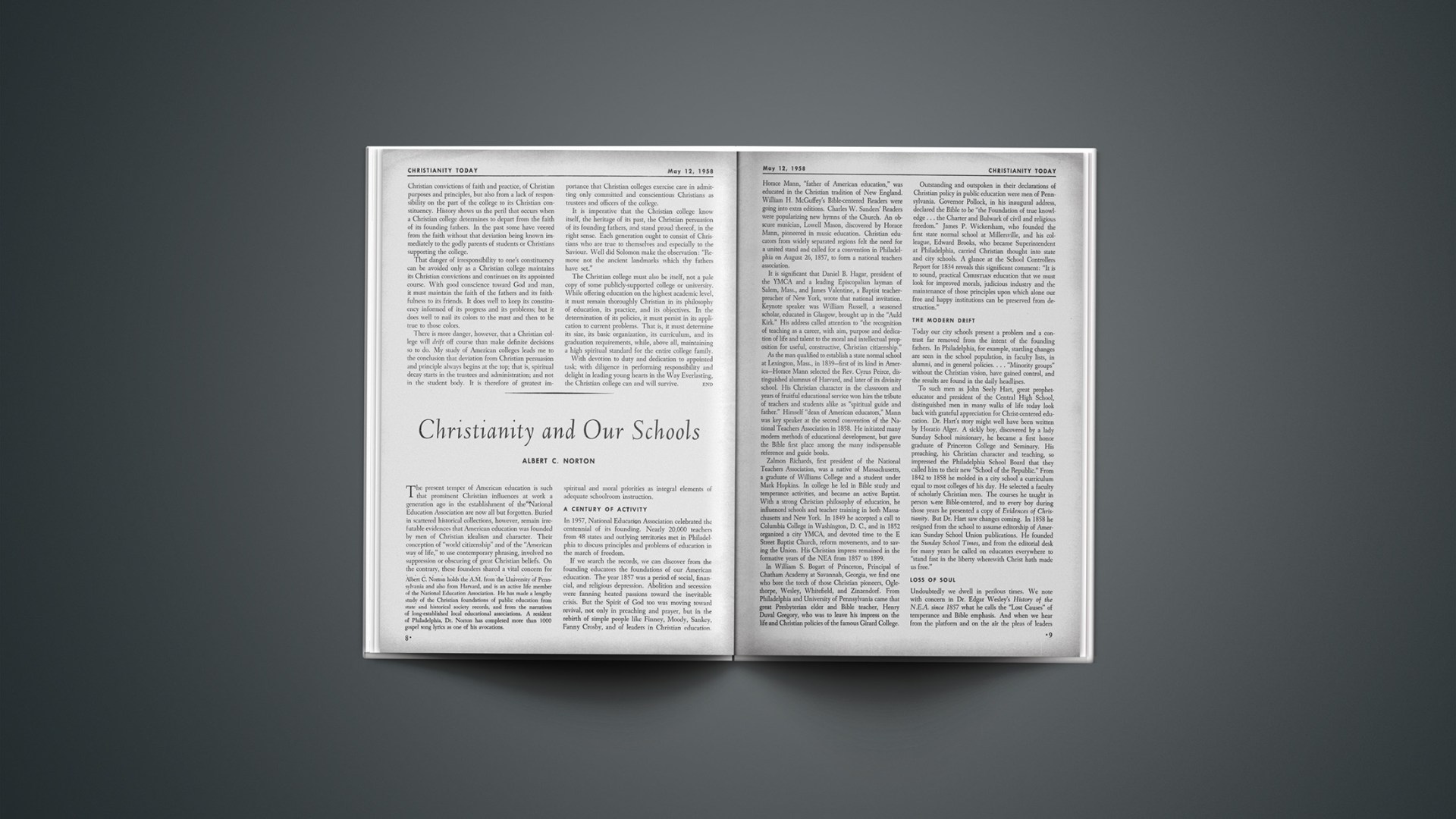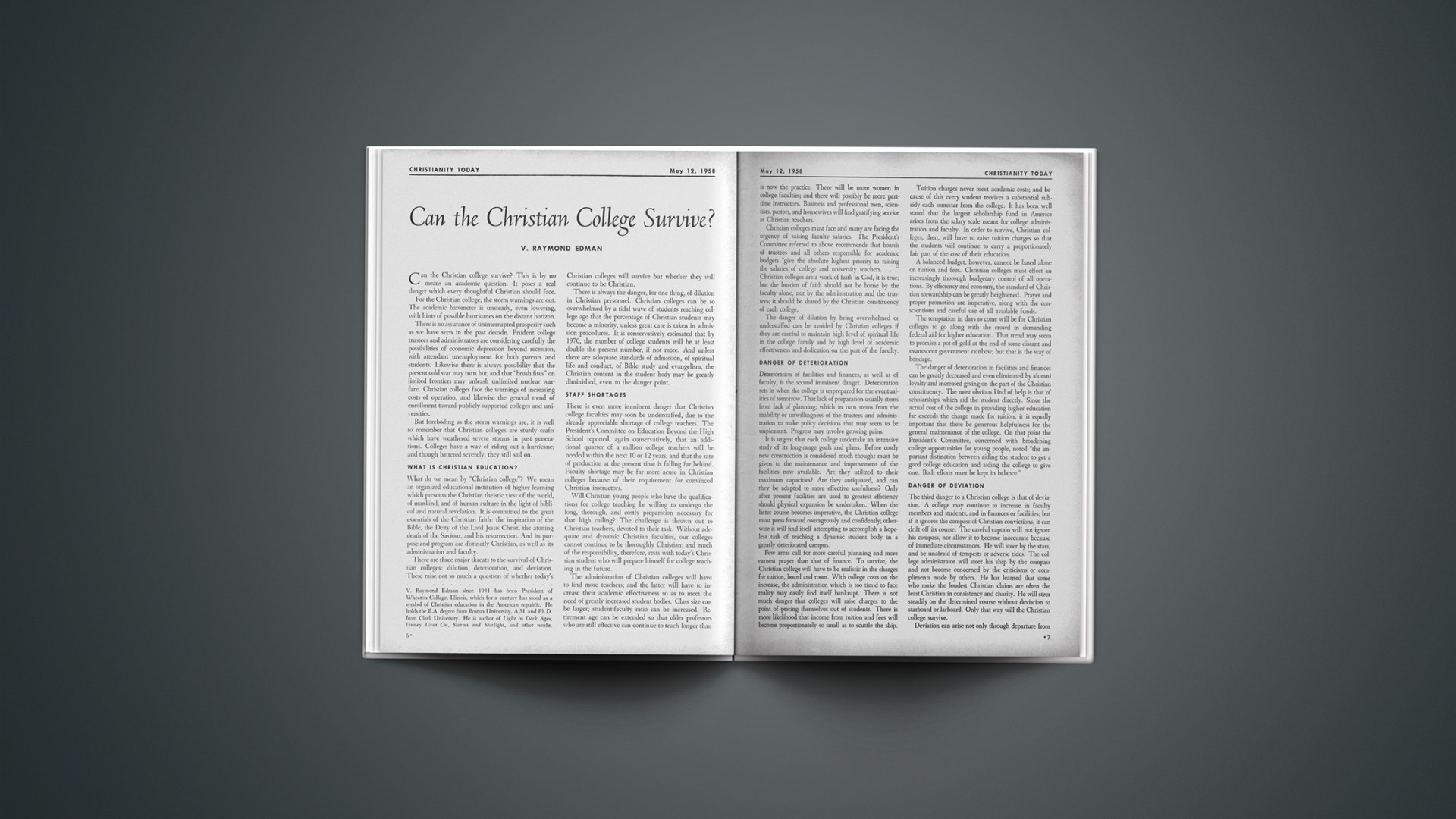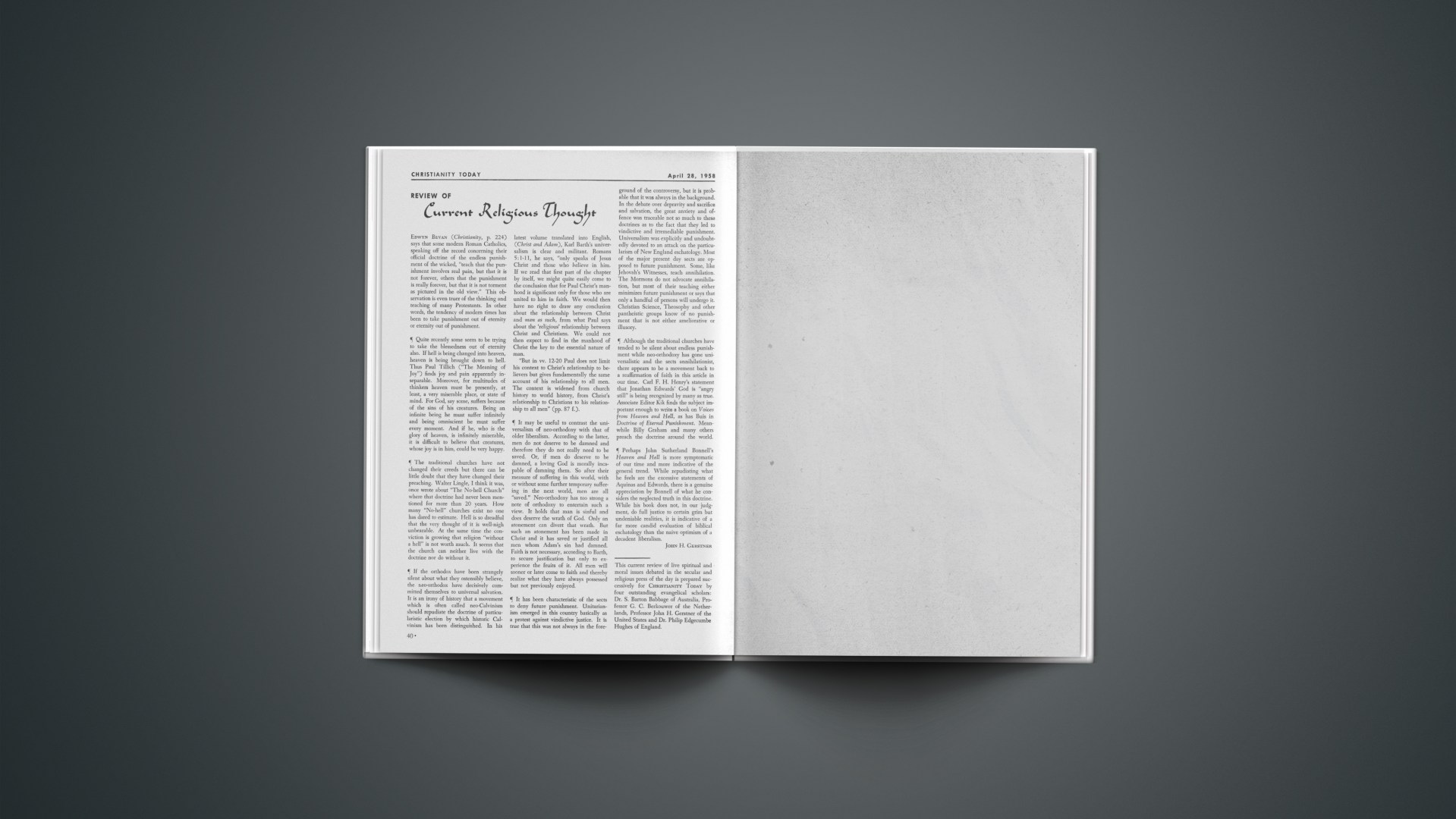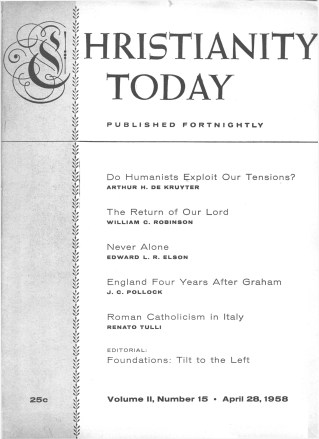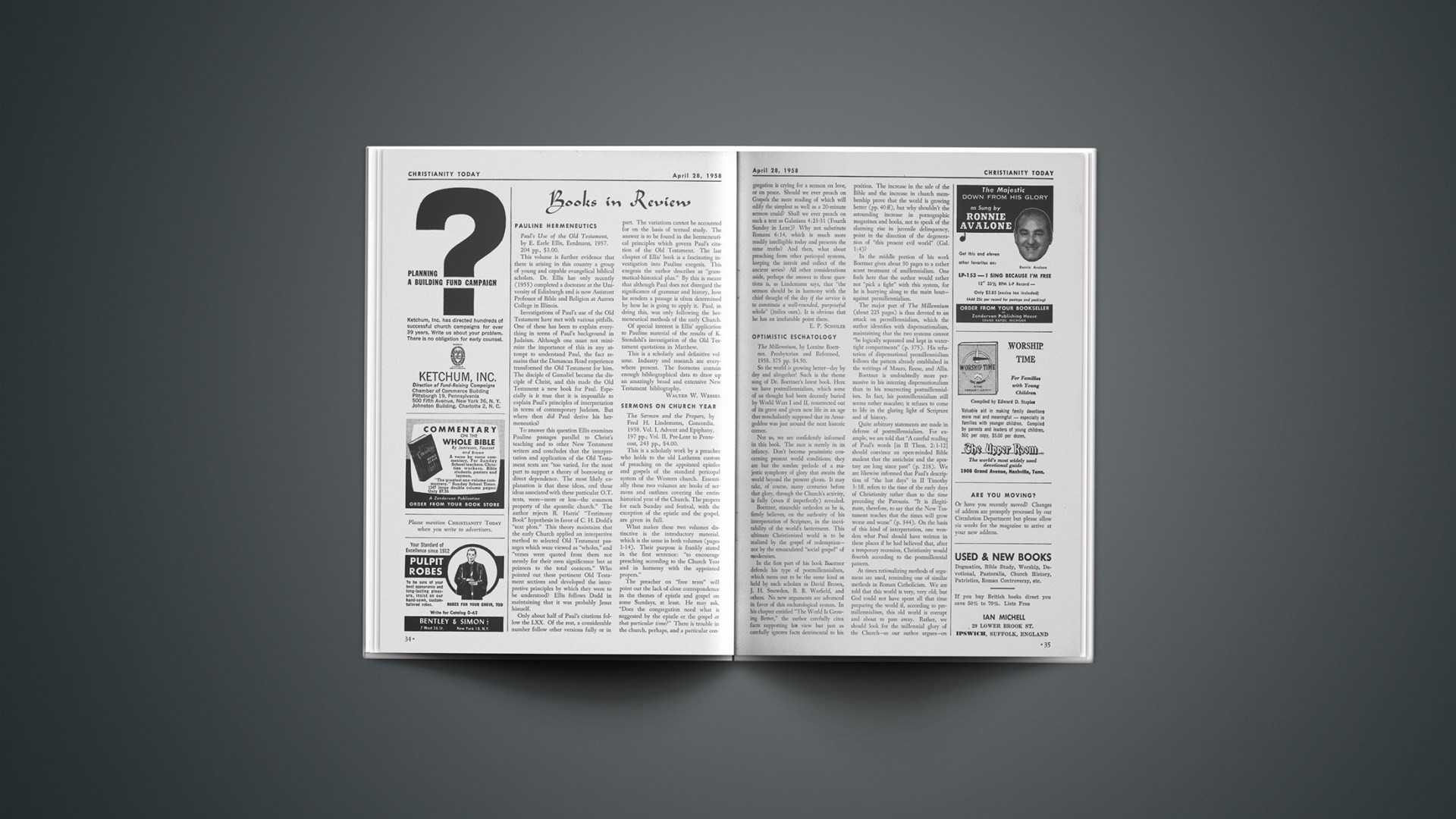Leviticus
The Book of Leviticus is at once the most legalistic of Old Testament books and the book which most clearly presents the grace of God in providing for man’s redemption. Minute prescriptions are given for the correct observance of rites and ceremonies, fast days and feast days. The most intimate details of life are regulated. Yet the very system of sacrifices which looms so large in Leviticus was designed to provide an atonement for the sinner. The shedding of blood at the brazen altar spoke of a God who desired to bring his errant people back to fellowship with himself.
Authorship Of Leviticus
Leviticus, along with the other books of the Pentateuch, has been traditionally ascribed to Moses. It shared in the dismemberment of the Pentateuch as proposed by the school of Wellhausen. Legal and priestly portions were assigned to the priestly writer (P). Most of Leviticus fell under this classification.
Archaeological discoveries of the present century tend to discount the neat schemes of source analysis which were popular a generation or two ago. The thought that the Levitical institutions were a projection into antiquity of the practices of the second Temple (from 500 B.C. onward) cannot be seriously entertained today. Clay tablets dating back to the fourteenth century before Christ, discovered at Ras Shamra (ancient Ugarit) since 1929, contain references to cultic practices which, in some cases, provide an exact parallel to Leviticus. In alphabetic script dating from the time of Moses we read of the burnt offering, the whole burnt offering, the peace offering, and the trespass (or guilt) offering.
That sacrifices were offered before Moses codified Israel’s law is taught throughout the Book of Genesis. Abel, Noah, Abraham and the patriarchs of Israel all offered sacrifices on altars which they built wherever they might be sojourning. In a theophany, God said to Isaac, “Abraham obeyed my voice, and kept my charge, my commandments, my statutes, and my laws” (Gen. 26:5).
Significant changes took place in the sacrificial system as codified in the Mosaic law. In place of the head of the family or clan officiating at his own altar (cf. Job 1:5), the sons of Aaron were consecrated to the priesthood. A portable structure, the Tabernacle, became the place of divine manifestation in the midst of the camp of Israel. Sacrifices were to be offered on the brazen altar at the gate of the Tabernacle court.
Trained as the adopted son of Pharaoh’s daughter, Moses was providentially prepared to become Israel’s lawgiver. Our increasing knowledge of the ancient Near East helps us to understand him in the important role he played as the mediator through whom God gave his law to Israel.
Coming Articles
Future studies for Bible Book of the Month are being prepared by outstanding evangelical scholars. In the Old Testament field Dr. R. Laird Harris of Covenant Theological Seminary will write on the Book of Numbers; Dr. Oswald T. Allis, on the Book of Deuteronomy; Dr. Charles F. Pfeiffer of Moody Bible Institute, on I Samuel; Dr. David A. Hubbard of Westmont College, on the Book of I Kings; Professor David Kerr of Gordon Divinity School, on the Book of Ezekiel; Dr. J. G. S. S. Thomson of Columbia Theological Seminary, on the Book of Hosea; Dr. Edward J. Young of Westminster Theological Seminary, on the Book of Amos; Dr. David A. Hubbard of Westmont College, Santa Barbara, California, on the Book of Joel.
In the New Testament field Professor John Murray of Westminster Theological Seminary will write on the Epistle to the Romans; Dr. Philip E. Hughes, Lecturer, Mortlake Parish Church, Church of England, on the Epistle to the Galatians; Dr. John H. Gerstner, of Pittsburgh-Xenia College, on the Epistle to the Ephesians; Dr. Merrill C. Tenney of Wheaton Gradudate School, on the Epistle to the Philippians; and Dr. F. F. Bruce of Sheffield University, England, on the Epistle to the Colossians.
The Purpose Of Leviticus
Leviticus is often thought of as a directory of worship for the Levitical priesthood. It is that, and much more. The instruction is addressed both to the priest and the layman. Although the priest is the one consecrated to approach God in prayer with a prescribed sacrifice, the demand of holiness and the opportunity for a life of fellowship with God know no limitations.
The law has sometimes been described as a hedge. It was designed to separate Israel from the surrounding nations. There were sins of Egypt and of Canaan which proved a source of temptation to Israel. God warned his people of the danger of yielding to these sins. Israel must “make a difference between the unclean and the clean.” Certain heathen practices were associated with diet. In Ugarit an individual would seek to gain favor with his god by slaying a kid in milk. The Mosaic law. legislated: “Thou shalt not seethe a kid in his mother’s milk” (Exod. 23:19).
The law which separated Israel from the nations was also to serve as a testimony to them. Abraham’s call involved the promise of ultimate blessing to “all the families of the earth” (Gen. 12:3). Isaiah triumphantly cried, “… out of Zion shall go forth the law, and the word of the Lord from Jerusalem. And he shall judge between the nations, and shall decide for many peoples” (Isa. 2:3–4). Throughout the Old Testament period there were souls like Rahab and Ruth who found in the law of the God of Israel that revelation of truth which became the guide of their lives. A Jonah might have no compassion on the inhabitants of Nineveh, but he was subjected to the discipline of God.
Leviticus also served as a part of that law which was to serve as a “schoolmaster” or “custodian” “to bring us to Christ” (Gal. 3:24). The fact of sin as an offense to God stands out in bold relief. The necessity for atonement through a prescribed sacrifice is the burden of Leviticus 1–7 and 16. The Lord’s claims on the time of his people are marked out in chapters 23 to 25.
Leviticus And The New Testament
In his earthly ministry, Jesus always spoke with utmost respect concerning Old Testament law. He made it clear that he had not come to destroy, but rather to fulfill the law (cf. Matt. 5:17). Paul considered the law as preparatory to Christ. It brought “the knowledge of sin” (Rom. 3:20). In this way human hearts were prepared to receive the divine Saviour.
The Epistle to the Hebrews declares the Mosaic institutions to be “the example and shadow of heavenly things” (8:5). They look forward to the ministry of Christ, for “it is not possible that the blood of bulls and of goats should take away sins” (10:4). The words of Jeremiah (31:31) are recalled, wherein the Lord promised to make a New Covenant in which the law would be written on the hearts of his people (Heb. 8:7–13). The first covenant, entered into by Israel with God at Mt. Sinai, was not “perfect” or there would have been no need for Jeremiah’s prophecy of a New Covenant. Israel broke the covenant—“they continued not in my covenant … saith the Lord” (8:9). God, however, mercifully promised a New Covenant, of which the Sinai covenant may be regarded as a type or shadow.
Parallels are drawn between Christ and Aaron. Both are appointed by and acceptable to God. Both offer sacrifices. Christ is not of the Aaronic order, however, but of the royal line going through David to Judah. How then can Christ serve as a priest? Prior to Levi (progenitor of the Levitical priesthood), Abraham had paid tithes to Melchizedek, the priest-king of Salem. Psalm 110 had mentioned one who would serve as a priest “after the order of Melchizedek.” The author of Hebrews uses these facts to demonstrate that Christ is a valid priest of a more ancient and high order than that of Aaron. In discussing the work of the priest, the author of the Epistle to the Hebrews makes use of the Levitical institutions, but in discussing the person of Christ, “our great High Priest,” he refers to the superior priesthood of Melchizedek.
As soon as Gentiles began to enter the Church in significant numbers it became necessary for the Church to define its attitude toward the Mosaic law. This was done at the Council of Jerusalem (Acts 15). Even before this, however, Peter received a revelation which heralded a new day for the Church. To overcome his reluctance to preach to the Gentile, Cornelius, Peter received a vision. A sheet containing all kinds of animals, reptiles, and birds was let down from heaven. Peter heard a voice saying, “Rise, Peter; kill and eat.” Peter’s reaction, as an orthodox Jew, was prompt: “No, Lord; for I have never eaten anything that is common or unclean.” The answer was to have far-reaching significance in the history of the Church: “What God has cleansed, you must not call common” (Acts 10:9–15). Although the purpose of this vision was to prepare Peter to preach the Gospel to an “unclean” Gentile, the form of the vision is significant in indicating that “unclean” foods might be considered “cleansed” after the purpose of the law had been accomplished.
Relevance Of Leviticus
If the Levitical regulations are not binding on the Church of Christ, why should we study Leviticus? If the New Covenant in Jesus’ blood is superior to and supplants the old covenant, in the blood of bulls and goats, can we not safely disregard the Mosaic covenant? Theologically the Church replies, “No!” Leviticus is in the Canon of Scripture and no serious effort has been made to remove it. Practically, however, it is often removed by the simple expediency of neglect.
Leviticus has important truth for every age. God is, in his essence, changeless. He revealed himself to Israel as a holy God. The character of God and the demands of holiness are taught in Leviticus with an emphasis which demands the attention of God’s people in every age. The God who warned Israel of the perils of disobedience is the God and Father of our Lord Jesus Christ.
Much of the theological vocabulary of the New Testament is understandable only by one who is well versed in the Old Testament sacrificial system. On the first page of the most popular New Testament book we read, “Behold, the Lamb of God, who takes away the sin of the world!” (John 1:29). The Israelite who heard these words of John the Baptist needed no commentary on them. He knew of the animals that were presented in the Temple to make atonement for individual or national sin. He knew that Jesus was being spoken of in the terms of sacrifice. The same may be said for the concepts of atonement and cleansing, so oft repeated in the New Testament. The blood of atonement and the laver of cleansing are concepts clearly taught in Leviticus.
Outline Of Leviticus
The Law of the Offerings (1:1–7:38). The section 1:1–6:7 gives the laws of the offerings. Supplementary instructions for the priests are given in 6:8 and 7:38. The five offerings are:
The burnt offering, existing in three grades, depending on the ability of the worshipper. In each case the offering was wholly consumed on the altar.
The meal offering, in three varieties. A handful was burned as a “memorial” (i.e. to bring the worshipper before God for mercy), and the remainder was eaten by the priests.
The peace offering served as a thank offering. Considerable latitude was allowed in the selection of a victim. The best part was burned as an offering to God, certain parts were assigned to the priests, and the remainder was returned to the worshipper.
The sin offering was provided for the atonement of sins committed “through ignorance” in contrast to those committed “with a high hand,” or in willful defiance of God. Four grades are prescribed, depending on the position of the offerer (high priest, whole nation, ruler, and private citizen). Blood is applied in the Tabernacle. The carcass is burned in a “clean place” outside the camp.
The trespass offering was provided for the individual who was unfaithful in meeting his obligations to God or man. A ram was prescribed. Part was burned and the remainder eaten by the priest. The offender was obligated to repay the amount due in offerings to God or obligation to man, with an additional fifth as a kind of fine which served to recompense the offended party for the loss of the use of his property.
2. The Consecration of Aaron and His Sons (8:1–10:20). After special offerings, Aaron and his sons were ceremonially cleansed, arrayed in priestly garments, and anointed for their work. A sacrificial meal was eaten at the door of the Tabernacle by the priests. The ceremony was repeated for seven days.
Following the week of consecration, the actual priestly work began. Sacrifices were offered for priests and people. Fire from heaven consumed the sacrifices. Nadab and Abihu, sons of Aaron took “strange fire” and offered incense. They died on the spot. God insists that offerings be made as he prescribes. The case of Ananias and Sapphira (Acts 5:1–11) is a parallel case in the early Church.
3. Laws of Purity (11:1–15:33). Prescriptions are given in the matters of food, childbirth, leprosy, and sexual life. The one ceremonially unclean may not take part in the life of the community.
4. The Day of Atonement (16:1–34). The most solemn day of the Israelite calendar. On this day the High Priest entered the Holy of Holies to make atonement for the sins of the people.
5. Holiness on the part of the People (17:1–20:27). Laws concerning food, marriage, and conduct are presented. The heinousness of the sins of religious prostitution (common in Canaanite religion) and infant sacrifice (practiced by Molech worshippers) calls forth specific condemnation and severe penalties for disobedience to the God of Israel. On the positive side, “Thou shalt love thy neighbor as thyself” (19:18).
6. Holiness on the part of Priests and Offerings (21:1–22:33). A special responsibility must be felt by those who handle “holy things.” Priests and offerings alike must be without visible blemish.
7. The Sanctification of Feasts (23:1–25:55). Basic to the Mosaic institutions was the concept of sacred seasons or “set feasts” when the great facts of Israel’s history were commemorated. These included the weekly Sabbath, a series of annual feasts and fasts, and special observances on the seventh and fiftieth years.
The Sabbath was designed to be a happy occasion when families gathered together in happy fellowship (23:3). It was called a “sabbath of solemn rest” and no work was to be performed on the seventh day.
The Passover (cf. Ex. 12) with the associated feast of unleavened bread formed an eight day annual feast. The presentation of a “sheaf of firstfruits” (23:10–11) marked the beginning of the barley harvest, and a recognition of the fact that the harvests revealed the mercy of the Lord.
Fifty days after the “sheaf of first-fruits,” the Feast of Weeks, or Pentecost was observed. This marked the end of the wheat harvest.
During the seventh month, the Feast of Trumpets, the Day of Atonement, and the Feast of Tabernacles were observed. Trumpets became known as the New Year’s Day. The Day of Atonement is described in Leviticus 16. Tabernacles was a joyous feast lasting eight days and commemorating the wilderness wandering of the Israelites (23:33–44). It served as a kind of “thanksgiving” and “harvest home” celebration, for it marked the end of the agricultural year.
The New Testament makes use of the language of the set feasts. Christ is termed “the firstfruits of them that are asleep” (1 Cor. 15:20, 23). James terms believers “a kind of firstfruits of his creatures” (Jas. 1:18). The author of Hebrews concludes, “there remains a sabbath rest for the people of God” (Heb. 4:9). It was on the Day of Pentecost that the Spirit came in power (Acts 2).
Every seventh year was observed as a “sabbath for the land,” which was permitted to lie fallow. After seven sabbaths of years, the fiftieth year was celebrated as a Jubilee. Slaves were set free. Family property which had been alienated was restored. It was a joyous occasion when Israel was commanded to “proclaim liberty throughout all the land unto all the inhabitants thereof” (25:10).
8. The Blessing of Obedience and the Evil of Disobedience (26:1–46). God’s covenant to bless and protect his people was a conditional one. He made it clear that disobedience and idolatry would bring severe judgment. Repentance, however, would result in restoration.
9. Laws Concerning Vows (27:1–34). In addition to meeting the demands of the law, such as tithes and firstfruits, a man might pledge his person or property to the Lord as a gift. Vows were voluntary, but when once made they were considered binding.
Tools For Study
For a brief but helpful discussion of Leviticus, the treatment of the book by Oswald T. Allis in his book God Spake by Moses and in The New Bible Commentary should be consulted. Charles R. Erdman’s exposition, The Book of Leviticus is nontechnical but helpful.
The exegete will wish to consult the treatment of Leviticus in the Keil and Delitzsch series and the work of Frederic Gardiner in the Lange Commentary. Kellogg on Leviticus in the Expositor’s Bible is a classic.
The concepts of sacrifice, priesthood, and offering are popularly treated in W. G. Moorehead, Studies in the Mosaic Institutions. More conservative in its treatment of types is the volume by Patrick Fairbairn, The Typology of Scripture. The pertinent sections in Oehler, Old Testament Theology and Geerhardus Vos, Biblical Theology are of help in relating Leviticus to the progress of revelation in Scripture.
An old but still helpful work on the subject of sacrifice is that by A. Stewart, The Mosaic Sacrifices. For a discussion of such concepts as redemption, the blood, and propitiation—basic to an understanding of the Israelite sacrificial system—the student should consult the recent (1955) work by Leon Morris, The Apostolic Preaching of the Cross. Here is an excellent discussion of the connection between blood and life and the problems raised in the exegesis of Leviticus 17:11. The writer’s The Book of Leviticus: A Study Manual provides an annotated outline of the book.
CHARLES F. PFEIFFER
Professor of Old Testament
Moody Bible Institute
Chicago, Ill.

